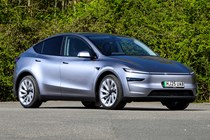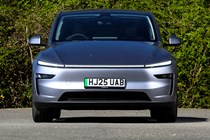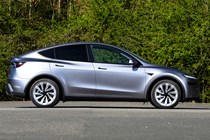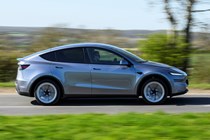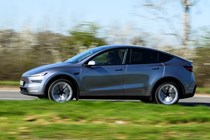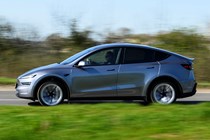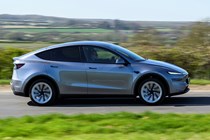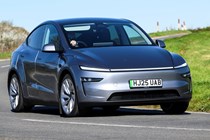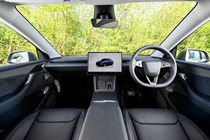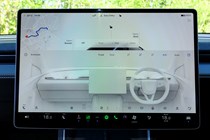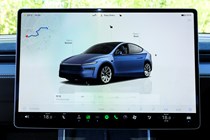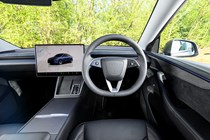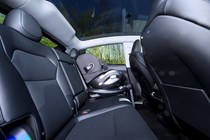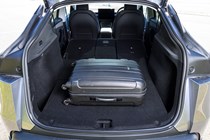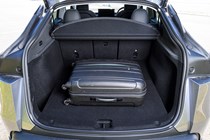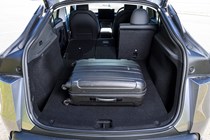Tesla Model Y engines, drive and performance

- Rapid in a straight line
- Lots of overtaking power
- Performance doesn’t tail off
Electric motors
Tesla isn’t the easiest manufacturer to deal with when it comes to performance figures. The brand doesn’t publicise power and torque numbers, choosing instead to illustrate its cars’ performance with simple 0–62mph times. I think it’s a stupid convention because buyers should have the right to know the capability of the product they own. Nevertheless, I’ll press on with the details I have.
The cheapest facelifted Tesla Model Y is called the ‘Rear-Wheel Drive.’ It has a single electric motor on the rear axle (of unknown capability) that serves up a 0–62mph time of 5.9 seconds, a top speed of 125mph and a maximum WLTP range of 311 miles.
Above that is the ‘Long Range Rear-Wheel Drive,’ which gets a bigger battery (of undisclosed capacity), a shorter 0–62mph time of 5.4 seconds and a greater 387-mile maximum range. The top-spec car is the ‘Long Range All-Wheel Drive’ (courtesy of an extra motor on the front axle) – and it has a 0–62mph time of 4.6 seconds and a 364-mile range.

I sampled the new Long Range All-Wheel Drive version. It’s quick, which is handy because I spent most of my day being carved up by other motorists. The instant response from the motors means you’ve always got enough power under your foot to exploit a gap in the traffic. Power delivery is incredibly linear, and acceleration doesn’t tail off until you’re approaching triple-digit speeds. That means it’s more than enough for everyday use.
What’s it like to drive?
- It’s not a car for keen drivers
- Numb steering and poor refinement
- Unpredictable ride quality
Being fast in a straight line is one thing. But being able to carry that speed around corners is an entirely different kettle of fish – and I’m afraid the Model Y simply isn’t up to the task.
I’ll start with the steering, which was easily the most concerning aspect of the car’s driving experience. I’ve kicked countless metaphors for its action around my laptop, but my best attempt at describing it is that it felt rusty. After winding on a quarter of a turn, the column knocked and graunched like it’d spent the last month at the bottom of the Dead Sea.
I wasn’t impressed with the chassis, either. My colleagues complained at length about the old Model Y’s uncomfortably firm suspension and, for this facelifted version, Tesla has somehow managed to make it worse. Just not in the way you’d expect.
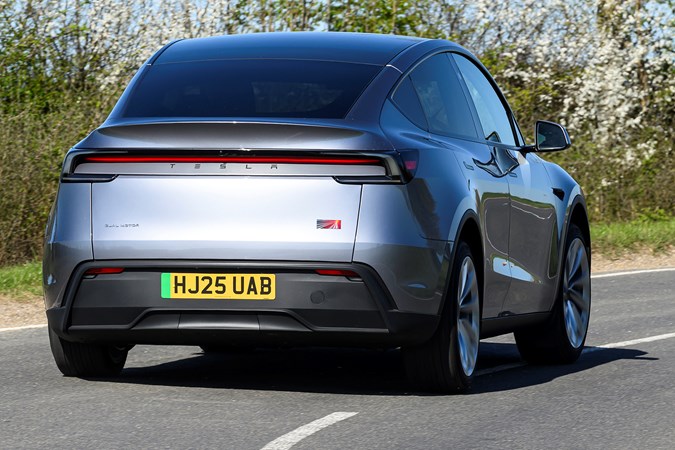
It now has softer springs, but the damping doesn’t feel like it’s been adjusted to suit. That means it’s floaty until you hit a bump, upon which it becomes immediately brittle as the adamantium dampers can’t compress quickly enough to absorb the impact. It’s annoyingly jiggly around town and constantly thumping into potholes on the motorway.
Combine the wooly, notchy steering with Tesla’s scattergun suspension setup and you’ve got the ideal recipe for a total lack of confidence. The Model Y is nowhere near as agile as the Kia EV6 or the BMW iX2. On a fast B-road, both those rivals can carry far more speed and feel much more engaging in the process.
The refinement is a real problem, too. Tyre roar is more noticeable than cars such as the Skoda Enyaq and Audi Q4 E-Tron. To make matters worse, the car’s own climate control system adds to the racket. Even on its lowest setting, my eardrums could have sworn I was sat on the business end of the Farnborough wind tunnel.


